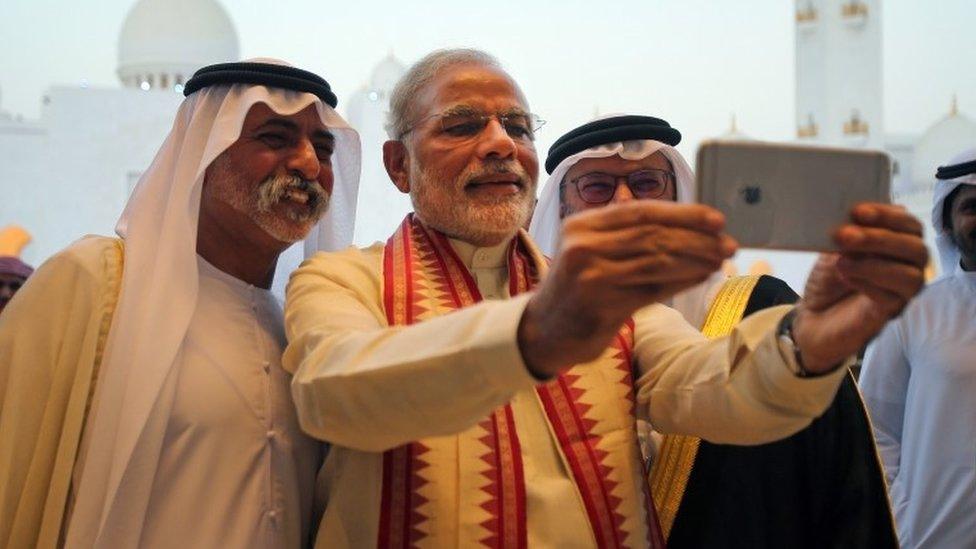What progress has India's economy made in the past five years?
- Published
Karishma Vaswani reports on why India's economic growth may not be all it seems
"You'll find the airport has changed dramatically, you'll be able to book a taxi using an app on your phone, and you'll see a real spring in the step of many people in India now - people are charged with optimism," one Indian businessman said when I asked what had changed in the five years I'd been away from a city that, in many ways, had been my second home.
Mumbai - or Bombay - has always held a mythical place in my family's history. It was here that my migrant Sindhi grandparents first came to, after they fled post-partition Pakistan, in search for a better life for their children.
And it was to Mumbai that I came in 2006 to report for the BBC on the fast-growing economy. The India that I saw then was in the midst of an unprecedented boom.
Growth rates were soaring, the outsourcing sector had helped to lift the monthly salaries of young Indians to levels their parents wouldn't have seen in a year, and Indian companies such as Tata were going global, buying up assets abroad.

Optimism at the chai-walla
One of the places I reported from frequently was the Bombay Stock Exchange.
The main share index, the Sensex, hit a record 10,000 points within the first few months of my arrival. When it reached 20,000 points in 2007 newspaper headlines at the time shrieked that India had finally hit the major league, as foreign funds rushed to invest in fast-growing companies.
Today when I visited the exchange, the Sensex had closed just under 28,000 points - respectable but hardly dazzling.
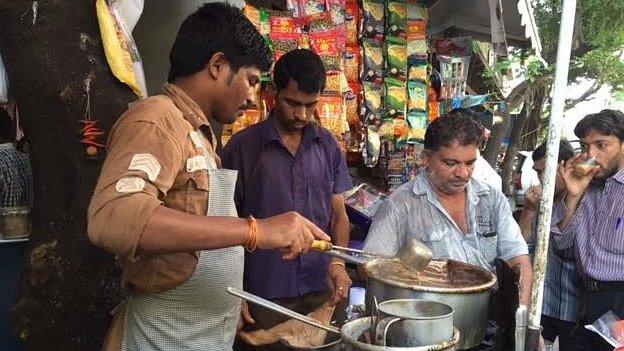
The mood at the chai-walla today is bullish
The topic of conversation for investors hanging out at the local chai-walla outside the Bombay Stock Exchange was very much the financial turmoil that has infected world markets of late.
The optimism of many of them took me by surprise.
"I think India will be able to withstand this and come out of it even better," said 26-year-old Preeti, a self-proclaimed avid investor. "My father has always told us to buy when the markets are down, and that's what I'm doing."
"When there's a sale at the supermarket, what do you do?" asked one mutual fund trader. "You rush to buy your rice and cooking oil don't you? Well that's what you should be doing now - India's stock markets won't be down for long."
2009 sweet spot
That's a refrain I've heard over and over in my time here in Mumbai over the last couple of days - and not just with regards to the stock market.
"India's economy isn't immune to the slowdown in China, but is more resilient than some of the other countries in the region," India's central bank governor Raghuram Rajan told me.
"Based on what I've seen so far there's no strong reason to believe we're on the verge of another crisis."
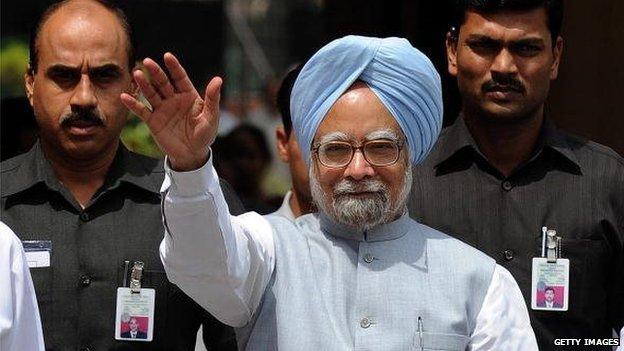
Prime Minister Singh was riding the crest of a wave following his election victory in 2009
When I left Mumbai in 2009 to take on a posting in Jakarta for the BBC, India was still in what many said was a sweet spot. The Congress-led coalition had just been voted back in for a second term because of strong economic growth, defying expectations of an electoral loss.
But a series of corruption scandals and increasing disenchantment with that government saw Manmohan Singh - the man once known as the father of Indian reform for his dream budget in 1991 that opened up the doors to the Indian economy - replaced last year by the populist pro-business politician from Gujarat, Narendra Modi.
Now though there are concerns about how quickly the new prime minister can deliver on some of his economic promises.
'Small steps, not big bangs'
Critics have said essential economic reforms - such as making it easier for businesses to buy land to build factories on - failed to pass through the last parliamentary session because of political opposition.
But some businessmen appear to be willing to give Mr Modi another chance.
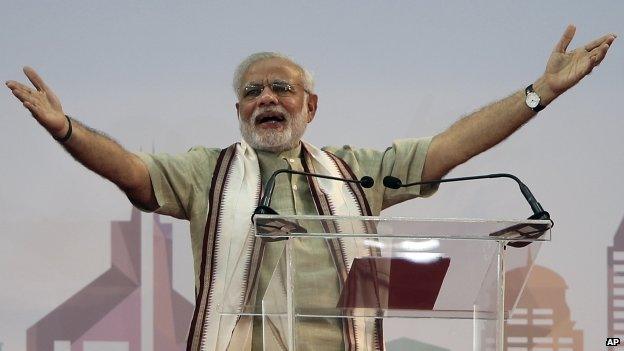
Some have questioned Mr Modi's ability to deliver on his reforms
One is Leo Puri, the managing director of UTI Asset Management: "I think the process of reforms in India is one of incremental steps instead of big bangs.
"I think there was a dramatic expectation of how much the new government would be able to achieve. Even in the 1991 reforms, they happened incrementally and over time before they started to have an effect."

1991 reforms
A number of reforms were initiated in 1991 which aimed to liberalise India's economy. These included:
a bonfire of licensing - instead of 80 licences needed to start a firm, only four or five were needed
tariffs were cut rapidly on most goods, apart from in the consumer sector; average tariffs fell from 87% in 1990 to 25% in 1995
the economy was opened up to foreign direct investment (FDI) - in the 1980s annual average FDI was $100m, in 1995-96 it was $2bn
capital markets were also liberalised and the tax system was reformed with lower rates
As a result, after growing by only 0.8% in 1991-92, India's economy grew by 5.1% in 1992-93.

It is true that economic growth in India is starting to pick up. The government says economic growth is 7% but is aiming for higher growth of 8%. If it achieves that, it could grow faster than China - at a time when the world is looking for a new driver of global growth.
Must act fast
But it is also true that some parts of the real economy have yet to feel that growth.
Some economists question India's growth figures, saying that economic indicators like credit and capital growth have yet to show similar gains. And many Indians say they're not feeling the effects of that growth in their wages or bank accounts.
And then there's the weather - the monsoon is also a big factor in how well the Indian economy does. Although agriculture only makes up 17% of the economy, roughly half of the Indian population makes a living through farming, and the monsoon is a key factor in whether rural demand picks up or not.
The reality is that India is unlikely to replace China as a main driver of global growth - depending on how you measure it, its economy is only a quarter or a fifth of the size of China's.
And regardless of China's current problems, it's also unlikely to completely disappear from the radar of investors. After all it's still a huge manufacturing and trading base and a massive market.
There's no doubt that the slowdown in China provides India with opportunities to expand, but it also means that India must act fast to exploit the advantage.
- Published25 August 2015
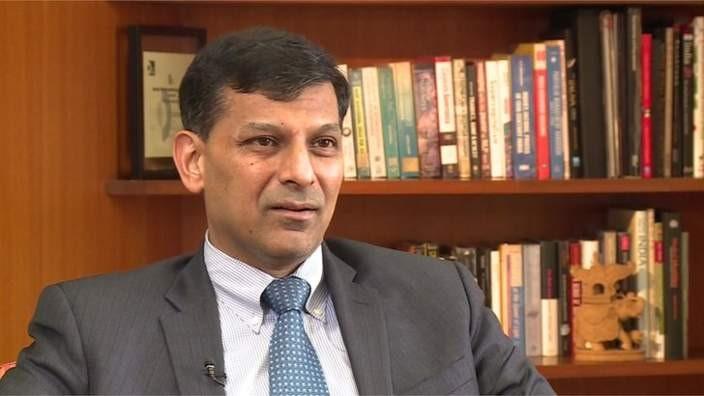
- Published25 August 2015
- Published17 August 2015
